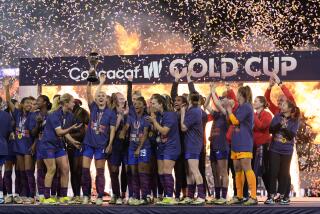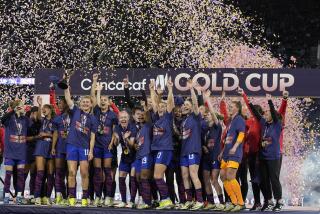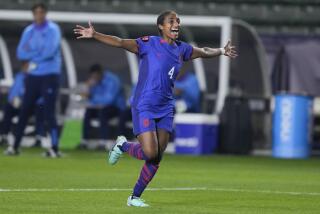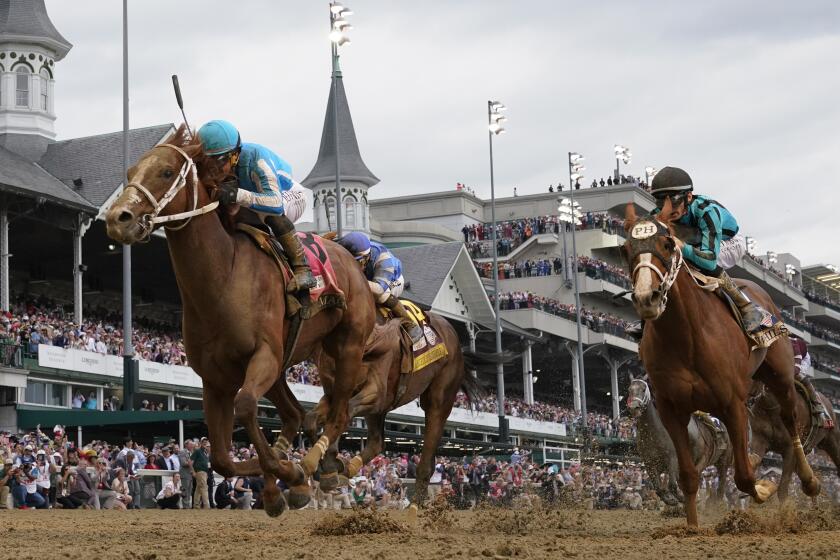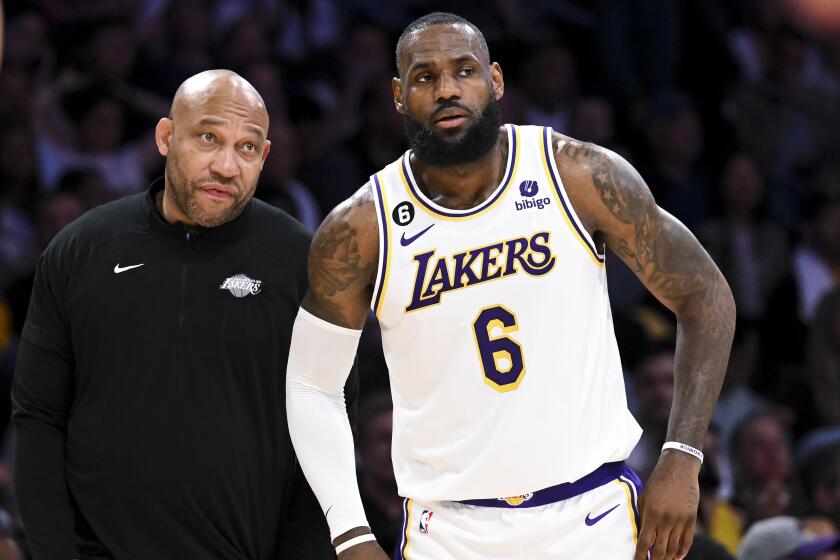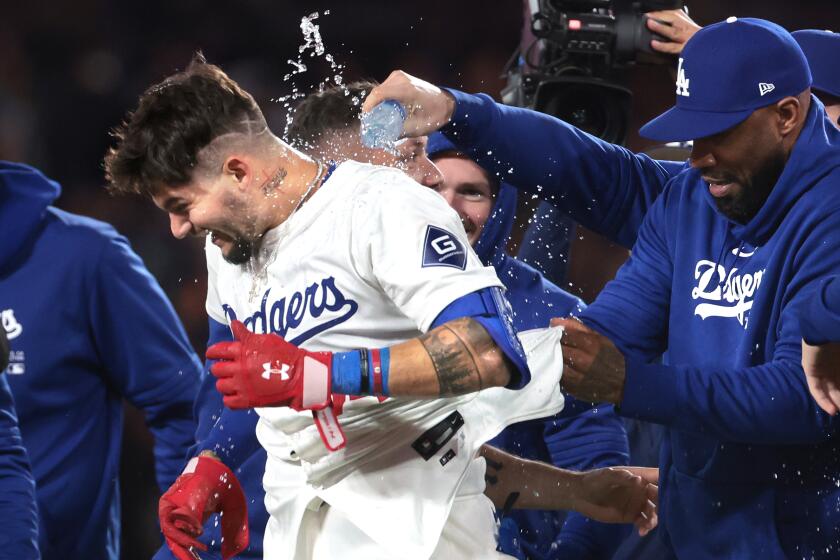U.S. team prepares to tackle a rugged assignment: Rugby World Cup

American Samu Manoa advances the ball against Australia during a Rugby World Cup tuneup at Soldier Field in Chicago.
To put it diplomatically, the United States hasn’t enjoyed much international success in rugby, the sport that spawned American football.
Yes, there was the gold medal at the 1924 Summer Olympics in Paris, but recent history has proven less kind. At the Rugby World Cup — held every four years since 1987 — the U.S. has three wins in six appearances and has never advanced out of pool play.
But this Rugby World Cup — which began Friday and runs through Oct. 31 at 13 venues in England and Wales — presents the U.S. with its best opportunity yet to advance. Or at least get more people to notice the sport back home.
This year’s crop of players, led by Samu Manoa and captain Chris Wyles, is a hodgepodge of amateurs mixed with pros competing overseas. The U.S. opens Sunday (at 4 a.m. PDT) against Samoa, followed by games against Scotland, South Africa and Japan in the coming weeks. Only the top two teams in each five-team pool advance to the next round.
“Every pool at the World Cup is very difficult, and I think every team goes in with the same ambition: take it one game at a time to get out of the pool,” scrum-half Mike Petri said. “Our ambitions are no different.”
Petri is one of the U.S. team’s amateur players, though he’s not a World Cup newbie, having competed in 2007 and 2011. He teaches math and science at Xavier High in Manhattan, and also coaches the school’s varsity rugby team. He says his rugby program has expanded to 125 students.
“For me as a coach, to see that so many kids have real ambitions with the sport — whether that’s to play in college, to represent the United States, play professionally — there have been a number of guys over the years that have really raised the standard and set an example for these kids to aspire to,” Petri said. “It’s been great to be a part of that and to see that growth and that explosion.”
Rugby’s development domestically is apparent at the youth level. It’s the fastest-growing sport in the United States, according to a study by the Sports & Fitness Industry Assn., particularly in the 6-12 age range. To say it’s truly arrived, however, would be premature. Samoa, a country with a population of roughly 200,000, is 12th in the world rankings. The United States is 15th.
“Samoa is big, they’re physical, they’re very athletic, and they’re the type of team that can really produce something when nothing else is really on,” Petri said. “They can be quite creative. We know it’s going to be a very tough first encounter.”
The U.S. lost to Samoa, 21-16, at the Pacific Nations Cup in July, but it was an encouraging result.
“We had a poor first half,” wing Blaine Scully said. “In the second half, we were in control, and we felt like if that game was another five minutes we could’ve won that.”
Another reason for the U.S. team to feel confident is the extra time and preparation it has invested in this year’s games, which wasn’t always the case.
“We’ve got some pretty talented players, guys that played domestically in the U.S. or professionally in Europe,” Wyles said. “We’ve come together and spent a decent amount of time together, which previously had been one of the challenges for USA Rugby.”
Whether or not the amateurs and professionals have meshed quickly enough remains to be seen, but all the representatives are on the same page when it comes to playing for their country.
“To me, it’s the pinnacle of any rugby player’s career to be here,” Petri said. “You have people flying in from all over the world, messages from people all over the world supporting you. You know you’re in the spotlight, and it’s pretty unique for us. “
More to Read
Get our high school sports newsletter
Prep Rally is devoted to the SoCal high school sports experience, bringing you scores, stories and a behind-the-scenes look at what makes prep sports so popular.
You may occasionally receive promotional content from the Los Angeles Times.
